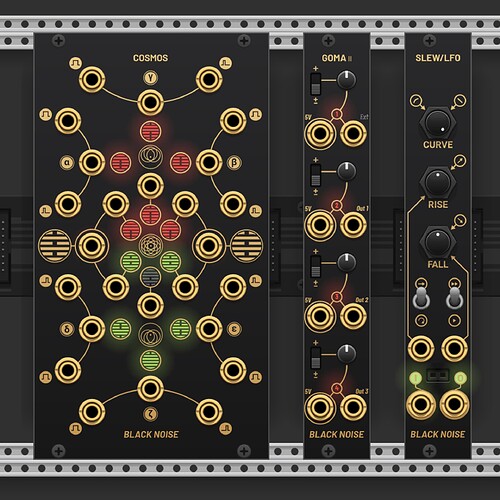Thanks for the flowers @hemmer. I am excited to see another plugin tackle oversampling for logic operations of audio rate signals. The Venom WinComp can produce oversampled bandlimited Min/Max (analog AND/OR) as well.
During WinComp development I tried to figure out how analog XOR works, and couldn’t figure it out. WinComp has a Clamp output, but it is not “through zero” clamping, whatever that means, and so I suppose it does not quite do analog XOR.
I understand why Min is considered analog AND, and Max is analog OR. But I don’t get the reasoning behind why the through zero clamp is called analog XOR.
I want to make sure I understand the expected behavior. What I observe with Cosmos in VCV is the magnitude of the analog XOR output is the minimum magnitude of A and B. The sign of the output is negative if the signs of both A and B match, and positive output if the input signs differ. Is that correct?
I have a major concern about the gate/trigger outputs of the XOR and XNOR. The manual states that for any of the gate outputs, the output is high if the analog output is above 0V, and low otherwise. I can see that behavior with Min (AND) and Max (OR), though the threshold defaults to 1V, not 0V.
But I do not see that behavior with the XOR gates. For the life of me I cannot figure out the relationship between the analog XOR and the XOR gate. For example, I sometimes get negative analog XOR output, yet high XOR gate output. Is that a bug? or a documentation error? or am I misunderstanding something? I am testing on Windows.
One last thing - I love that all three modules are polyphonic. That is another thing I strive to support with Venom, and it is good to see that enhancement to the BlackNoiseModular clones. But the tags need to be updated to reflect that fact! Currently only GOMA is tagged as polyphonic. I worry that many people will miss out on the polyphonic possibilities without that tag.
Also, perhaps the manual link should point to the GitHub readme where it describes the differences between the VCV clones and the hardware, which I think is important info. That readme already includes a link to the hardware descriptions and manuals for the rest of the information.
![]() This is a big step for us in making our tools accessible to everyone, and we hope you’ll enjoy experimenting with them.
This is a big step for us in making our tools accessible to everyone, and we hope you’ll enjoy experimenting with them.